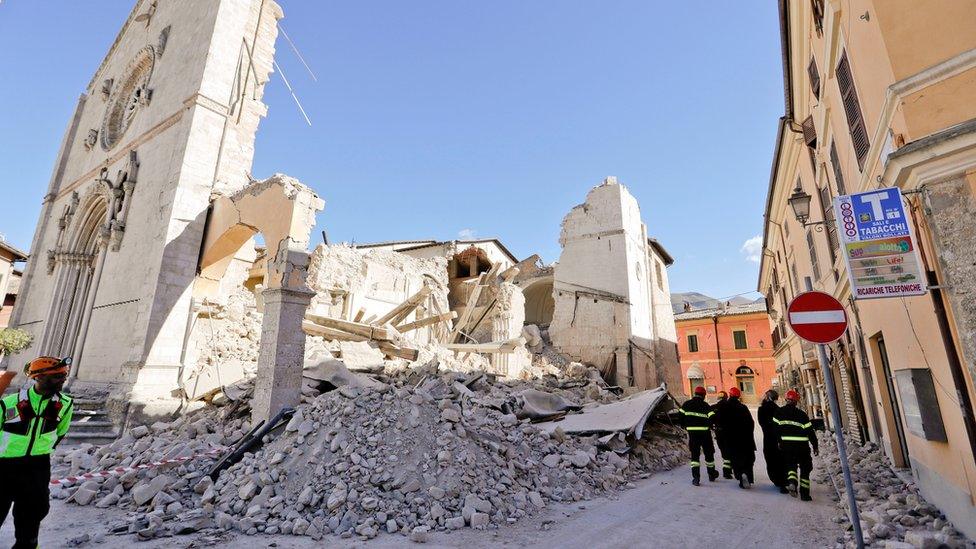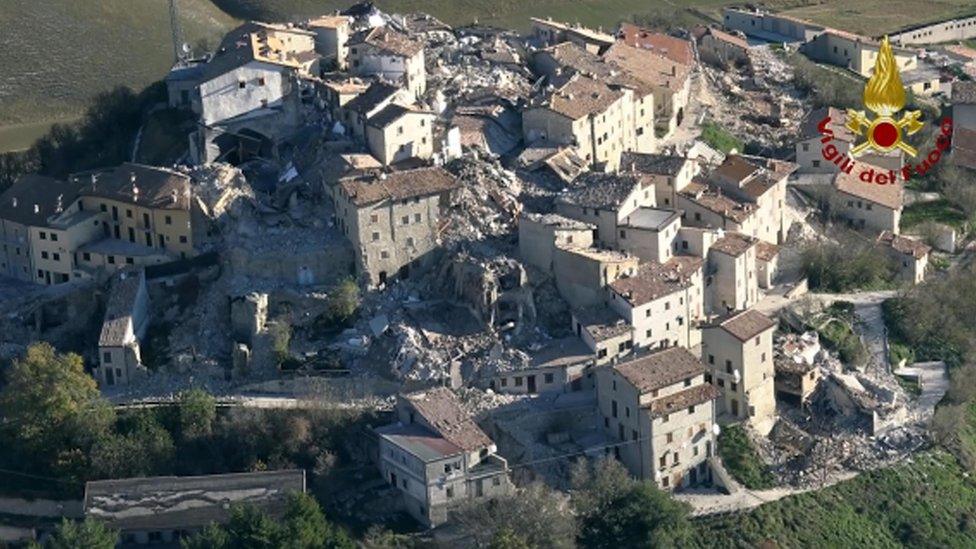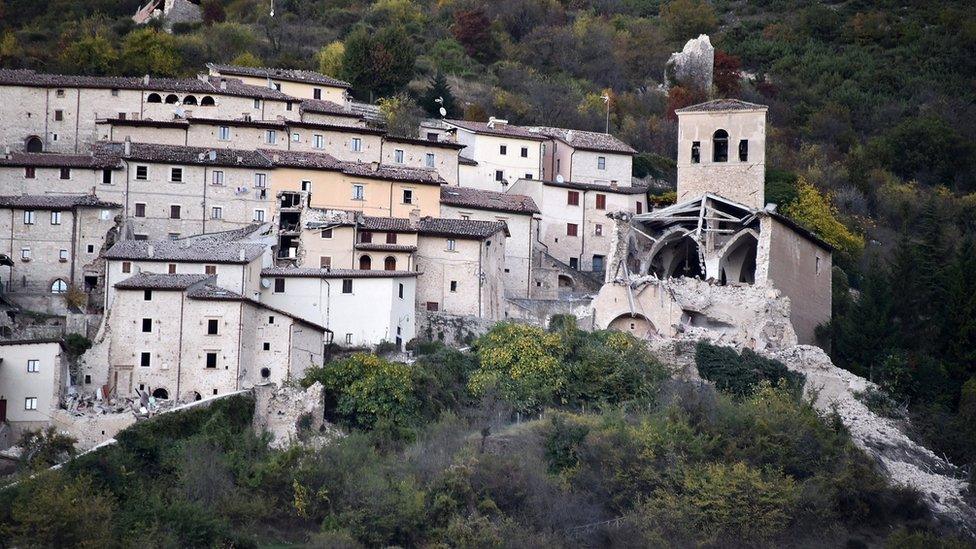Italy earthquake: Why did no-one die in the latest disaster in Norcia?
- Published

Quake damage in Norcia. It has had two large tremors in the past 40 years
When Italy suffered its strongest earthquake in decades on Sunday, multiple buildings collapsed and a number of people were injured. Yet so far there have been no reports of any fatalities.
So why did the villagers in central Italy escape relatively unscathed, even though many lost their homes and belongings?
The magnitude 6.6 quake was far stronger than the 6.0 disaster on 24 August that claimed 298 lives, many of them in the town of Amatrice, an hour's drive from Norcia.
Thirty-six years earlier, in 1980, a 6.9 magnitude quake near Naples left almost 2,500 people dead, with many more injured and homeless.
Time bomb
The answer, according to seismologist Gianluca Valensise, is memory and fear.
"It is clear now that vulnerability greatly increases with the time that passes since the last earthquake," Mr Valensise, of Italy's National Institute of Geophysics and Vulcanology (INGV), told the BBC.
"In Amatrice, the memory was lost. It had been long enough for people not to be too concerned about earthquakes - and that brings trouble with the next one."
There was no such gap for Norcia, which has felt the devastating effects of two large earthquakes - including a 6.1 magnitude earthquake that hit the Umbria and Marche regions in 1997 - in the past 40 years. Each time, its buildings were strengthened, its residents reminded of the devastation the earth could cause.

People in the region were already terrified following a string of large earthquakes since August
By the time the quake struck Norcia at 07:40 on Sunday, there was no-one in the area who did not remember.
The region has been rocked by four aftershocks since 24 August - two in the last week alone.
Thousands of people have already fled to the safety of relatives' homes, shelters and hotels on the coast, far away from the towns filled with historic - and more vulnerable - buildings. Others were living in their cars, terrified of their homes collapsing on them as they slept.
Undoubtedly, this will have saved lives. In the village of Ussita, just north of Norcia, Mayor Marco Rinaldi watched the buildings around him collapse from the safety of his car.
"I was sleeping in the car and I saw hell," he later told Italy's ANSA news agency.
Mr Valensise says: "The 24 August earthquake was the first earthquake of the sequence. It happened in the night and there was absolutely no warning. When it came to Norcia, the region had been struck already.
"Many people had already gone elsewhere for fear of the strikes."

But there is also one other, so far unexplained, reason. Despite registering as a stronger earthquake than the one in August, it may have actually been weaker.
Geologists are trying to work out exactly why.
"This was a different sort of earthquake," says Mr Valensise. "We are still investigating the details as it has only been 24 hours since the event.
"But, in some cases, the magnitude does not explain the shaking. Larger events can cause less shaking and less damage."
- Published31 October 2016

- Published5 October 2016

- Published2 October 2016
